The Border Wall Is Symbolic of a Nation Trapped by History
Even some of the most outward-looking U.S. presidents presided over the erection of a deadly run of barriers separating the U.S. from Mexico.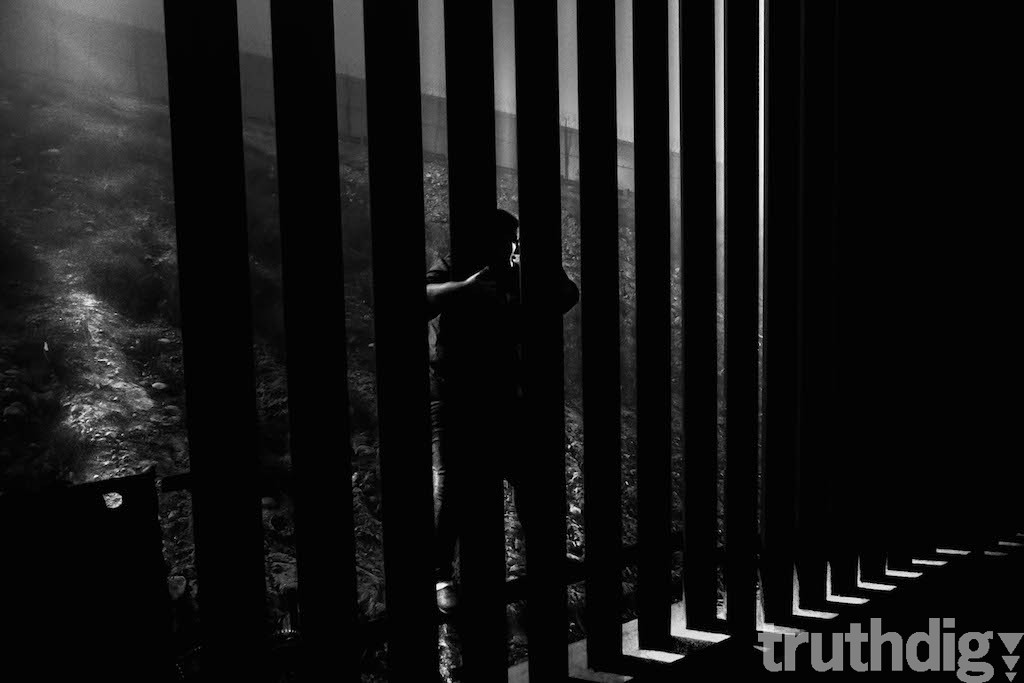 Michael Nigro / Truthdig
Michael Nigro / Truthdig
The point was less to actually build “the wall” than to constantly announce the building of the wall. “We started building our wall. I’m so proud of it,” Donald Trump tweeted. “What a thing of beauty.”
In fact, no wall, or certainly not the “big, fat, beautiful” one promised by Trump, is being built. True, miles of some kind of barrier — barbed wire, chain-link and steel-slat fencing, corrugated panels, and, yes, even lengths of what can only be described as concrete wall — have gone up along the U.S.-Mexico border, starting at least as far back as the administration of President William Taft, early in the last century. Trump has claimed repairs and expansions of these barriers as proof that he is fulfilling his signature campaign promise. Plaques have already been bolted onto upgrades in existing fencing, crediting him with work started and funded by previous administrations.
And yet Trump’s phantasmagorical wall, whether it ever materializes or not, has become a central artifact in American politics. Think of his promise of a more than 1,000-mile-long, 30-foot-high ribbon of concrete and steel running along the southern border of the United States as America’s new myth. It is a monument to the final closing of the frontier, a symbol of a nation that used to believe it had escaped history, but now finds itself trapped by history, and of a people who used to believe they were captains of the future, but now are prisoners of the past.
From Open to Closed Borders
Prior to World War I, the border — established in the late 1840s and early 1850s after the U.S. military invaded Mexico and took a significant part of that country’s territory — was relatively unpoliced. As historian Mae Ngai has pointed out, before World War I the United States “had virtually open borders” in every sense of the term. The only exception: laws that explicitly excluded Chinese migrants. “You didn’t need a passport,” says Ngai. “You didn’t need a visa. There was no such thing as a green card. If you showed up at Ellis Island, walked without a limp, had money in your pocket, and passed a very simple [IQ] test in your own language, you were admitted.”
A similar openness existed at the border with Mexico. “There is no line to indicate the international boundary,” reported Motor Age, a magazine devoted to promoting automobile tourism, in 1909. The only indication that you had crossed into a new country, heading south, was the way a well-graded road turned into a “rambling cross-country trail, full of chuck-holes and dust.”
The next year, the State Department made plans to roll “great coils of barbed wire… in a straight line over the plain” across the open borderland range where Texans and Mexicans ran their cattle. The hope was to build “the finest barbed-wire boundary line in the history of the world.” Not, though, to keep out people, as the border wasn’t yet an obstacle for the Mexican migrant workers who traveled back and forth, daily or seasonally, to work in homes, factories, and fields in the United States. That barbed-wire barrier was meant to quarantine tick-infested longhorn cattle. Both Washington and Mexico City hoped that such a fence would help contain “Texas Fever,” a parasitic disease decimating herds of cattle on both sides of the border and leading to a rapid rise in the cost of beef.
As far as I can tell, the first use of the word “wall” to describe an effort to close off the border came with the tumultuous Mexican Revolution. “American troops,” announced the Department of War in March 1911 during Taft’s presidency, “have been sent to form a solid military wall along the Rio Grande.” Yes, Donald Trump was not the first to deploy the U.S. Army to the border. Twenty thousand soldiers, a large percentage of that military at the time, along with thousands of state militia volunteers, were dispatched to stop the movement of arms and men not out of, but into Mexico, in an effort to cut off supplies to revolutionary forces. Such a “wall” would “prove an object lesson to the world,” claimed the Department of War. The point: to reassure European investors in Mexico that the U.S. had the situation south of the border under control. “The revolution in the republic to the south must end” was the lesson that the soldiers were dispatched to teach.
The revolution, however, raged on and borderland oil companies like Texaco began building their own private border walls to protect their holdings. Then, in April 1917, the month the United States entered World War I, President Woodrow Wilson signed into law a set of sweeping constraints on immigration generally, including literacy tests, entrance taxes, and quota restrictions. From that point on, the border sharpened — literally, as lengths of barbed wire were stretched ever further on either side of port-of-entry customs houses.
What follows is a chronology of both the physical fortification of the U.S.-Mexico boundary and the psychic investment in such a fortification — the fantasy, chased by both Democrats and Republicans for more than half a century, that with enough funds, technology, cement, steel, razor ribbon, barbed wire, and personnel, the border could be sealed.This timeline illustrates how some of the most outward-looking presidents, men who insisted that the prosperity of the nation was inseparable from the prosperity of the world, also presided over the erection of a deadly run of border barriers, be they called fences or walls, that would come to separate the United States from Mexico.
A Chronology
1945: The first significant physical barrier, a chain-link fence about five miles long and 10 feet high, went up along the Mexican border near Calexico, California. Its posts and wire mesh were recycled from California’s Crystal City Internment Camp, which had been used during World War II to hold Japanese-Americans.
1968: Richard Nixon’s “southern strategy” famously played to the resentments of white southern Democrats who opposed civil rights. As it turned out, though, the president had another southern strategy in mind as well, a “border strategy.” As historian Patrick Timmons has written, running for president in 1968, Nixon promised to get tough on illegal drugs from Mexico — the “marijuana problem,” he called it. Shortly after winning the White House, he launched “Operation Intercept,” a brief but prophetic military-style, highly theatrical crackdown along the border. That operation created three weeks of chaos, described by National Security Archive analyst Kate Doyle as an “unprecedented slow-down of all plane, truck, car and foot traffic — legitimate or not — flowing from Mexico into the southern United States.” That it would be run by two right-wing figures, G. Gordon Liddy and Joe Arpaio, should be a reminder of the continuities between the Nixon era and the kind of demagoguery that now rules the country. Arpaio would become the racist sheriff of Maricopa County, Arizona, who gratuitously imposed humiliating, brutal, and often deadly conditions on his overwhelmingly Latino prisoners. He would also become an early supporter of Donald Trump and would receive the first pardon of Trump’s presidency after a judge found him in criminal contempt in a racial-profiling case. Liddy, of course, went on to run Nixon’s “Plumbers,” the burglars who infamously broke into the Democratic National Committee’s headquarters at the Watergate Hotel, precipitating the president’s downfall. In his 1996 memoir, Liddy said Operation Intercept primarily wasn’t about stopping the flow of pot. Instead, its “true purpose” was “an exercise in international extortion, pure, simple, and effective, designed to bend Mexico to our will” — to force that country to be more cooperative on a range of policies.
1973-1977: The United States had just lost a war in Vietnam largely because it proved impossible to control a border dividing the two parts of that country. In fact, Secretary of Defense Robert McNamara, desperate to keep North Vietnamese forces from infiltrating South Vietnam, had spent more than $500 million on 200,000 spools of barbed wire and five million fence posts, intending to build a “barrier” — dubbed the “McNamara Line” — running from the South China Sea to Laos. That line failed dismally. The first bulldozed six-mile strip quickly became overgrown with jungle, while its wooden watch towers were, the New York Times reported, “promptly burned down.” It was as that war ended that, for the first time, rightwing activists began to call for a “wall” to be built along the U.S.-Mexico border.
Biologist Garrett Hardin, a professor at the University of California, Santa Barbara, was typical. In “Population and Immigration: Compassion or Responsibility?,” an essay in the Ecologist, he wrote: “We might build a wall, literally.” Hardin was an early exponent of what today is called “race realism,” which holds that, in a world of limited resources and declining white birth rates, borders must be “hardened.”
During these years, southern border conflicts were especially acute in California, where Ronald Reagan was then governor. As San Diego’s sprawl began to push against agricultural fields where migrant workers from Mexico toiled, racist attacks on them increased. Vigilantes drove around the back roads of the greater San Diego area shooting at Mexicans from the flatbeds of their pickup trucks. Dozens of bodies were found in shallow graves.
Such anti-migrant violence was fueled, in part, by angry Vietnam veterans who began to carry out what they called “beaner raids” to break up migrant camps. Snipers also took aim at Mexicans crossing the border. Led by the 27-year-old David Duke, the Ku Klux Klan set up a “border watch” in 1977 at the San Ysidro point of entry and received significant support from local Border Patrol agents. Other KKK groups soon set up similar patrols in south Texas, placing leaflets stamped with skulls and crossbones on the doorsteps of Latino residents. Around this time, in the swampy Tijuana estuary, an area that border vigilantes began calling “Little ‘Nam,” U.S. border agents reported finding pitfall traps modeled on the punji traps the Vietnamese had set for American soldiers.
1979: President Jimmy Carter’s administration offered a plan to build a fence along heavily trafficked stretches of the border, but scuttled the idea as the 1980 presidential election approached.
1980-1984: “You don’t build a nine-foot fence along the border between two friendly nations,” Ronald Reagan said on a presidential campaign swing through Texas in September 1980. By taking a swipe at the Carter administration’s plans, he was making a play for that state’s Latino vote, 87% of which had gone to Carter four years earlier. “You document the undocumented workers and let them come in here with a visa,” Reagan said, and let them stay “for whatever length of time they want to stay.”
Then, four years later, President Reagan shifted gears. “Our borders are out of control,” he insisted in October 1984. As he ran for reelection, his administration started pushing the idea that the border could indeed be “sealed” and that the deployment of “high tech” equipment — infrared scopes, spotter planes, night-vision goggles — might provide just such effective control. “New stuff,” claimed a Border Patrol official, though some of the ground sensors being set out along that border were leftovers from Vietnam. In his second term, Reagan did get an immigration reform bill passed that helped more than two million undocumented residents obtain citizenship. But his administration, looking to appease a growing caucus of nativists in the Republican Party, also launched Operation Jobs, sending federal agents into workplaces to round up and deport undocumented workers. In 1984, the Border Patrol saw the largest staff increase in its 60-year history.
1989: In March 1989, a few months before the Berlin Wall fell, the new administration of President George H. W. Bush proposed building a 14-foot-wide, 5-foot-deep border trench south of San Diego. Some likened it to a “moat,” since it would be filled with run-off rainwater. “The only thing they haven’t tried is mining the area,” quipped Robert Martinez, the director of San Diego’s American Friends Service Committee. Opponents called it an “inverted Berlin Wall,” while the White House claimed that the trench would solve both drainage and immigration problems. The idea was shelved.
1992: Richard Nixon’s former speechwriter Patrick Buchanan provided an unexpectedly strong challenge to a sitting president for the Republican nomination, calling, among other things, for a wall or a ditch — a “Buchanan trench,” as he put it — along the U.S.-Mexico border and for the Constitution to be amended so that migrant children born in the country couldn’t claim citizenship. Bush won the nomination, but Buchanan managed to insert a pledge in the Republican platform to build a “structure” on the border. It proved an embarrassment at a moment when there was an emerging post-Cold War consensus among Republican and Democratic Party leaders that a free trade agreement with Mexico had to be encouraged and the border left open, at least for corporations and capital. Bush’s campaign tried to fudge the issue by claiming that a “structure” didn’t necessarily mean a wall, but Buchanan’s people promptly shot back. “They don’t put lighthouses on the border,” his sister and spokesperson Bay Buchanan said.
1993: Having passed the North American Free Trade Agreement in Congress, President Bill Clinton immediately started to militarize the border, once again significantly increasing the budget and staff of the Border Patrol and supplying it with ever more technologically advanced equipment: infrared night scopes, thermal-imaging devices, motion detectors, in-ground sensors, and software that allowed biometric scanning of all apprehended migrants. Stadium lights went up, shining into Tijuana. Hundreds of miles of what the Clinton White House refused to call a “wall” went up as well. “We call it a fence,” said one government official. “‘Wall’ has kind of a negative connotation.”
The objective was to close off relatively safe urban border crossings and force migrants to use more treacherous places in their attempts to reach the United States, either the creosote flatlands of south Texas or the gulches and plateaus of the Arizona desert. Trips that used to take days now took weeks on arid sands and under a scorching sun. Clinton’s Immigration and Naturalization Service commissioner, Doris Meissner, claimed “geography” as an “ally” — meaning that desert torments would work wonders as a deterrent.
 The Clinton White House was so eager to put up a set of barriers that it barely paid attention to the actual borderline, at one point mistakenly running a section of the structure into Mexico, prompting a protest from that country’s government.
The Clinton White House was so eager to put up a set of barriers that it barely paid attention to the actual borderline, at one point mistakenly running a section of the structure into Mexico, prompting a protest from that country’s government.
Another stretch, spanning 15 miles from the Pacific Ocean, would be built using Vietnam-era steel helicopter landing pads stood on end. Their edges were so sharp that migrants trying to climb over them often severed their fingers. As one observer noted, the use of the pads raised “the chilling possibility” that the U.S. might be able to “wall off the country” with leftover war matériel.
2006: The Secure Fence Act, passed by President George W. Bush’s administration with considerable Democratic support, appropriated billions of dollars to pay for drones, a “virtual wall,” aerostat blimps, radar, helicopters, watchtowers, surveillance balloons, razor ribbon, landfill to block canyons, border berms, adjustable barriers to compensate for shifting dunes, and a lab (located at Texas A&M and run in partnership with Boeing) to test fence prototypes. The number of border agents doubled yet again and the length of border fencing quadrupled. Operation Streamline detained, prosecuted, and tried migrants en masse and then expedited their deportation (mostly using an immigration reform law Clinton had signed in 1996). Agents from Immigration and Customs Enforcement (created after 9/11) seized children off school buses and tracked undocumented residents deep into liberal states, including in the exclusive Hamptons on New York’s Long Island and in New Bedford, Massachusetts. All told, in his eight years in office, Bush deported two million people, at a rate roughly matched by his successor, Barack Obama.
2013: The Democratic-controlled Senate passed a bill in June 2013 that — in exchange for the promise of a one-time amnesty and a long-shot chance at citizenship for some of the millions of undocumented residents in the country — offered more billions of dollars for policing, fencing, and deportations. According to the New York Times, with a winding down in Iraq and Afghanistan (however brief it would prove to be), defense contractors like Lockheed Martin were betting on a “military-style buildup at the border zone,” hoping to supply even more helicopters, heat-seeking cameras, radiation detectors, virtual fences, watchtowers, ships, Predator drones, and military-grade radar. The bill failed in the House, killed by nativists. But the Democratic Party would continue to fund “tough-as-nails” (in the phrase of New York Democratic Senator Charles Schumer) border security programs that amounted to years of up-armoring the border in what was then referred to as a “border surge.”
No one really knows how many people have died trying to get into the United States since Washington began to make the border tough as nails. Most die of dehydration, hyperthermia, or hypothermia. Others drown in the Rio Grande. Since about 1998, the Border Patrol has reported nearly 7,000 deaths, with groups like the Tucson-based Coalición de Derechos Humanos estimating that the remains of at least 6,000 immigrants have been recovered. These numbers are, however, undoubtedly just a fraction of the actual toll.
June 16, 2015: Donald J. Trump descends an escalator in Trump Tower to the tune of Neil Young’s “Rockin’ in the Free World” to announce his presidential campaign and denounce “Mexican rapists.”
“I will build a great, great wall on our southern border,” he tells Americans. “And I will have Mexico pay for that wall.”
Show Me a 50-Foot Wall …
“Something there is that doesn’t love a wall,” poet Robert Frost once wrote.
Borders, not to mention walls, represent domination and exploitation. But they also symbolize the absurdity of political leaders taking the world as it is and trying to make it as they think it ought to be. However much people might curse border fortifications, they also enjoy subverting them — even if the subversion only lasts a moment, as when citizens of Naco, Sonora, and Naco, Arizona, play an annual volleyball game over the border fence; or when an artist decides to paint “the world’s longest mural” on border fencing; or when families come together to gossip, tell jokes, and pass tamales and sweets between the posts; or when couples get married through the spaces separating the slats. As long as the United States keeps coming up with new ways to fortify the border, people will keep coming up with new ways to beat the border, including tunnels, ramps, catapults and homemade cannons (to launch bales of marijuana to the other side), and GoFundMe campaigns to pay for ladders.
As Janet Napolitano, former governor of Arizona and former director of Homeland Security, once said, “Show me a fifty-foot wall, and I’ll show you a fifty-one-foot ladder.”
Your support matters…Independent journalism is under threat and overshadowed by heavily funded mainstream media.
You can help level the playing field. Become a member.
Your tax-deductible contribution keeps us digging beneath the headlines to give you thought-provoking, investigative reporting and analysis that unearths what's really happening- without compromise.
Give today to support our courageous, independent journalists.

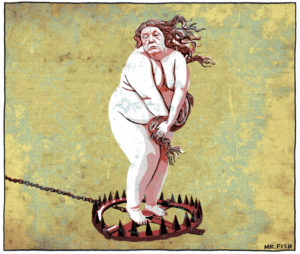
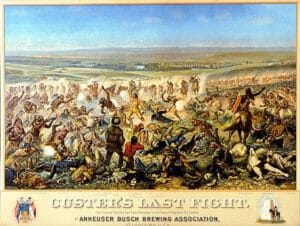
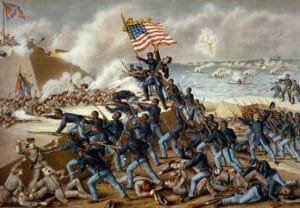

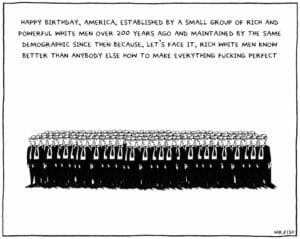


You need to be a supporter to comment.
There are currently no responses to this article.
Be the first to respond.